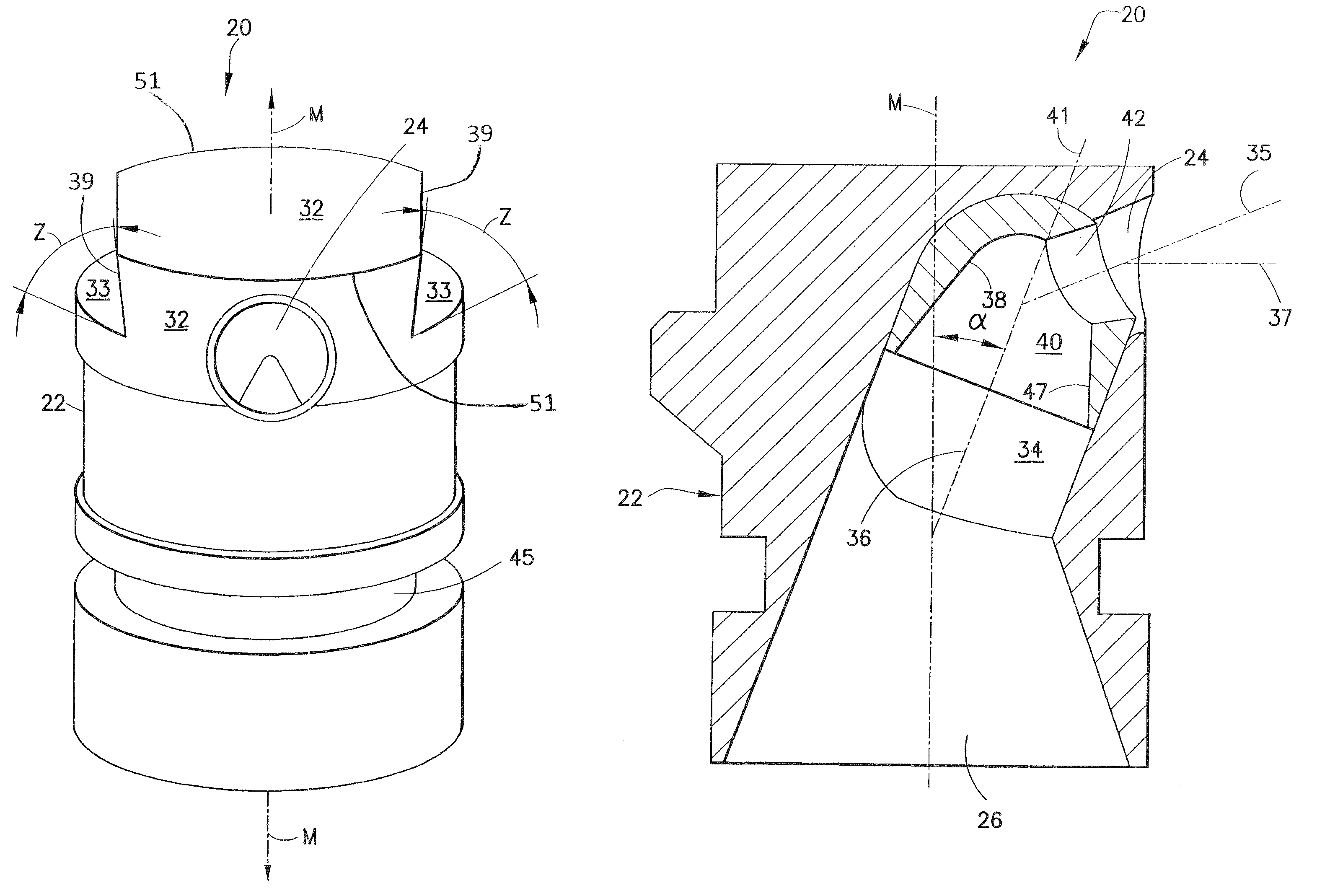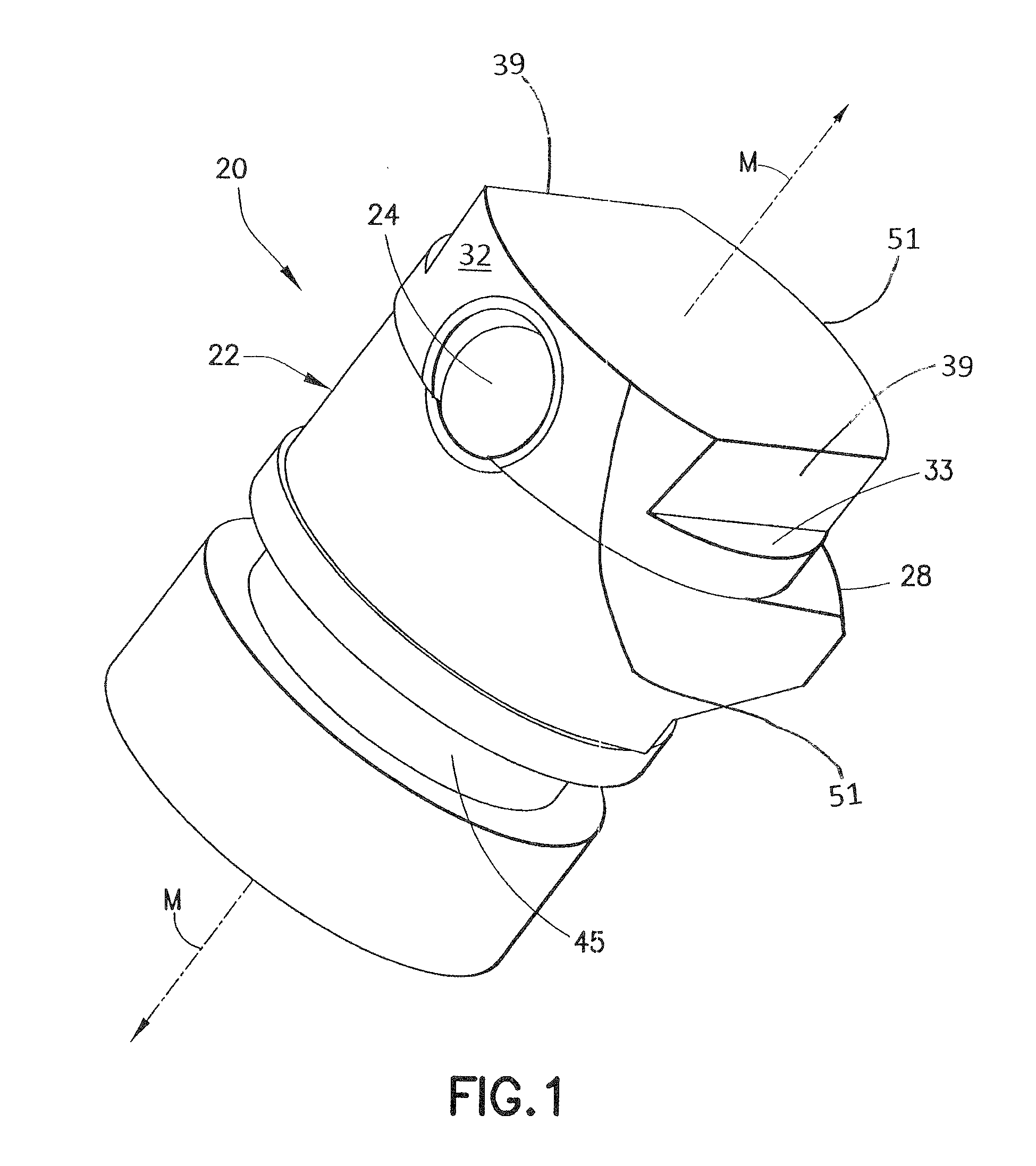Centrifuge nozzle and method and apparatus for inserting said nozzle into a centrifuge bowl
a centrifuge and nozzle technology, which is applied in the direction of centrifuges, combustion types, lighting and heating apparatuses, etc., can solve the problems of improper nozzle orientation, difficulty in removing the nozzle from the bowl, damage to one or both of the nozzle and the bowl, etc., to reduce power requirements, smooth fluid transfer, and flexibility.
- Summary
- Abstract
- Description
- Claims
- Application Information
AI Technical Summary
Benefits of technology
Problems solved by technology
Method used
Image
Examples
Embodiment Construction
[0030]As shown in FIGS. 1-3, a centrifuge nozzle made in accordance with the present invention is generally designated by the reference number 20 and includes a nozzle body generally designated by the reference number 22. In the illustrated embodiment, the nozzle body 22 is substantially cylindrical in shape and defines an axially extending longitudinal axis designated by the letter “M.” The nozzle body 22 also defines an outlet 24 (FIGS. 1 and 2) in fluid communication with an inlet 26 (FIG. 3). As best shown in FIGS. 1 and 3, the nozzle body 22 also defines a radially projecting camming surface 28 adapted to frictionally engage a surface defined by a rotor bowl 30 (FIG. 7) to releasably secure the centrifuge nozzle 20 to the rotor bowl.
[0031]Referring to FIG. 2, the nozzle body 22 also defines a male mounting portion 32, projecting outwardly from a surface 33 and shown in the illustrated embodiment as having a dovetail-shaped cross-section, the dovetail defining an angle “Z” relat...
PUM
| Property | Measurement | Unit |
|---|---|---|
| angle | aaaaa | aaaaa |
| angle | aaaaa | aaaaa |
| angles | aaaaa | aaaaa |
Abstract
Description
Claims
Application Information
 Login to View More
Login to View More - R&D
- Intellectual Property
- Life Sciences
- Materials
- Tech Scout
- Unparalleled Data Quality
- Higher Quality Content
- 60% Fewer Hallucinations
Browse by: Latest US Patents, China's latest patents, Technical Efficacy Thesaurus, Application Domain, Technology Topic, Popular Technical Reports.
© 2025 PatSnap. All rights reserved.Legal|Privacy policy|Modern Slavery Act Transparency Statement|Sitemap|About US| Contact US: help@patsnap.com



